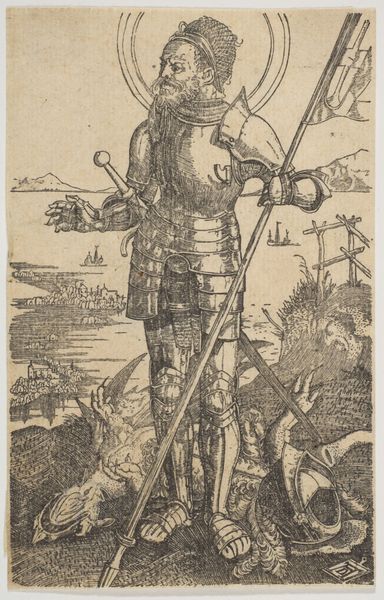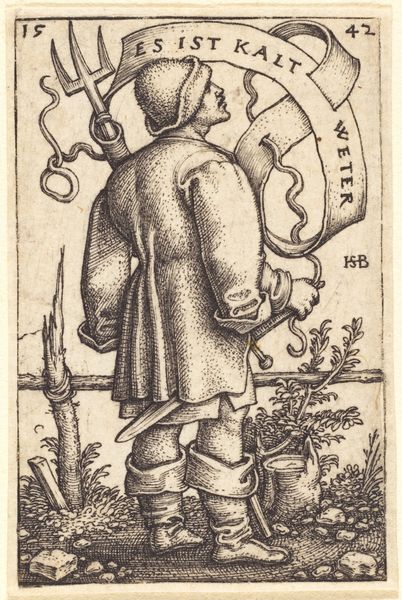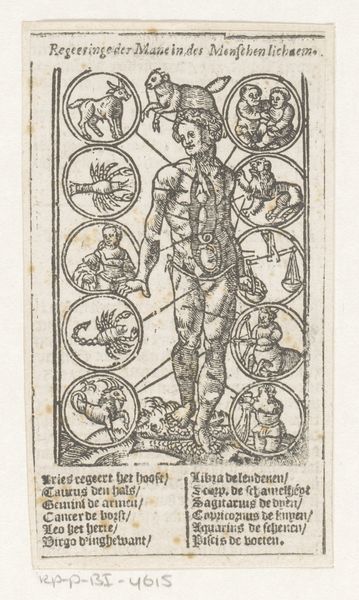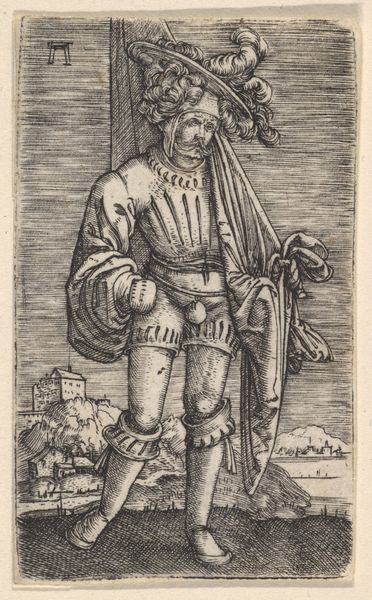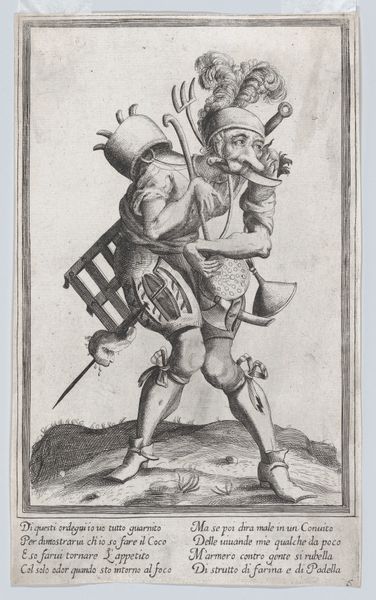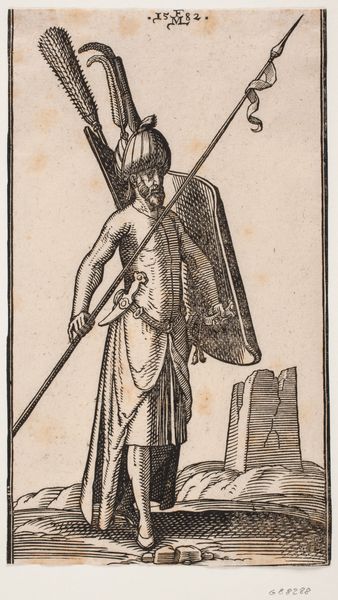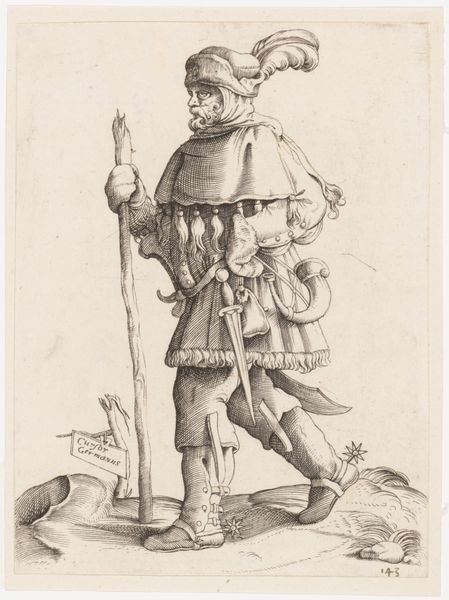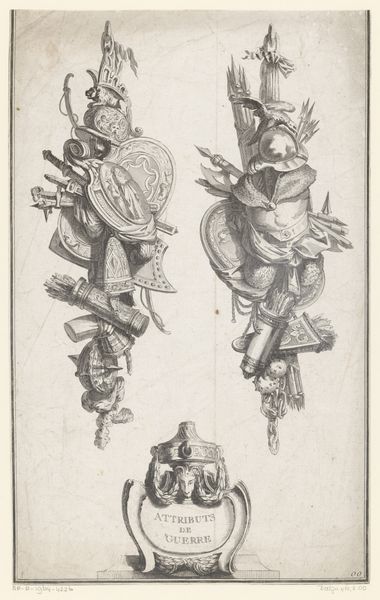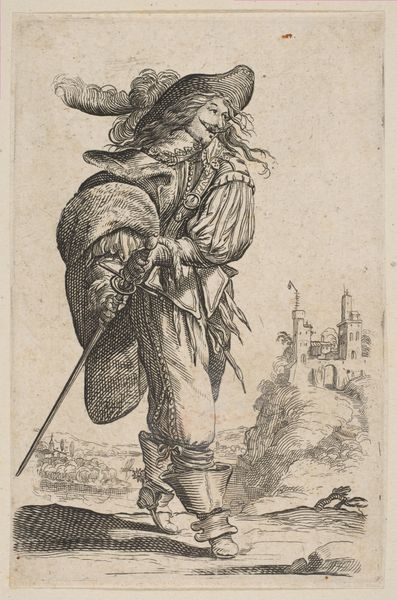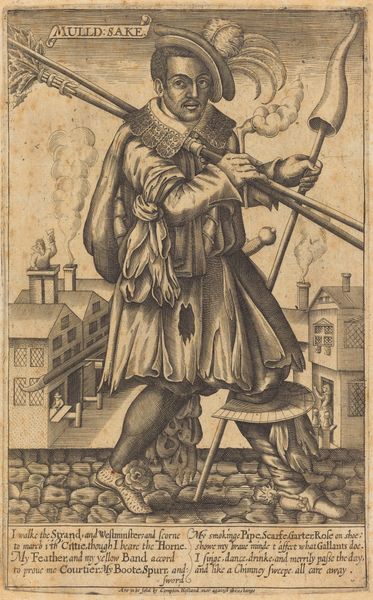
graphic-art, print, engraving
#
graphic-art
#
narrative-art
# print
#
figuration
#
history-painting
#
engraving
Dimensions: height 158 mm, width 105 mm
Copyright: Rijks Museum: Open Domain
Editor: Here we have "Tiende eeuw", which translates to "Tenth Century," an engraving made anonymously between 1667 and 1672. The image depicts a figure constructed of armor, but rather than an empty suit, it's populated with various scenes and figures, almost like an illustrated timeline. What jumps out to me is how the armor symbolizes a kind of container for history, each piece holding specific moments or figures. What do you see in this piece? Curator: Indeed, it's fascinating how history is being presented here. I see this print operating on several levels within its socio-political context. Notice the explicit connection of historical figures with the decades across the body, suggesting an evolution visualized. In seventeenth-century Europe, there was a huge burgeoning of popular print culture. I think the image served to reinforce narratives, who got to be IN that armored body and therefore the story of the century? Consider, who is left out? Editor: That makes me wonder about the target audience for this kind of piece. Were these widely circulated and accessible, or intended for a more elite, educated group? Curator: That’s the key question, isn't it? The presence of text indicates literacy as a prerequisite for fully understanding the narrative. However, the symbolic representation would certainly have had some appeal to a broader public, perhaps sparking curiosity and further discussion within communities. What effect does using the cuirassier's armor to create this symbolic and narrative tool? Editor: I hadn't really considered it like that before. Thanks, that makes the social message more visible. Curator: I’m glad to bring it to your attention; hopefully you understand my intentions and analysis. Editor: Thank you, Curator. That was insightful, it has provided another angle that I can consider when looking at art.
Comments
No comments
Be the first to comment and join the conversation on the ultimate creative platform.
